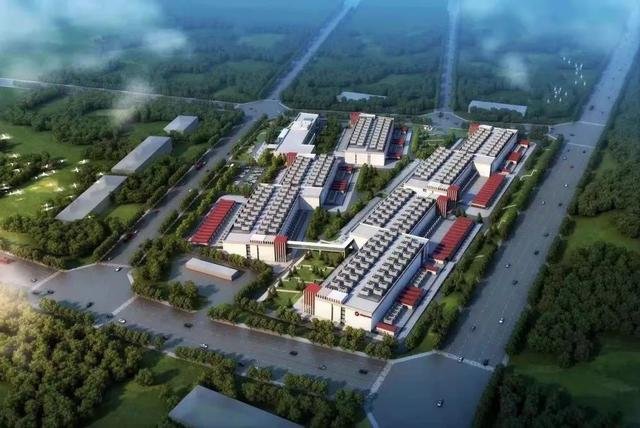
A render of the data center campus in Lhasa. Source: Tibet Autonomous Region Cyber Security and Informatization Committee Office
Meeting the world’s highest data center — serving SEA
- The construction of the world’s highest-altitude data center will cost upwards of US$1.8 billion and be able to serve South Asia, Southeast Asia data needs
Chinese state media is reporting that the construction of a cloud computing data center is well underway in the Tibet Autonomous Region. And once completed, it will be the world’s highest altitude cloud computing data center and capable of serving the data storage needs of South Asian nations like Nepal, Bangladesh, Pakistan, as well as parts of Southeast Asia.
The data center is nearing completion of its first phase that will be ready for operation in 2021. The data center’s location within the high-tech zone of the Tibetan regional capital city of Lhasa is situated at an altitude of around 3,656 meters, making it the highest-altitude data center in the world, the Chinese state-run Xinhua news agency reported.
With a total planned investment of 11.8 billion yuan (in excess of US$ 1.8 billion), the project will provide data services in fields like video rendering, autonomous driving, distance-learning data backup, among others, according to its Lhasa-based operator, the Ningsuan Technology Group. With its altitude of nearly 4000 meters, Tibet could be an ideal on-premise venue thanks to its cooling temperatures and out-of-the-way location.
A recent survey of 208 organizations for Digital Realty in Singapore, Indonesia, and Malaysia found that 66% of Southeast Asian enterprise respondents believe that energy efficiency and sustainability are important factors when choosing a data center provider. But those concerns can be outweighed by other factors such as reliability and security, pricing, scalability, and network connectivity.
One of the key factors that will impact sustainability and energy efficiency discussions is the data center cooling issue, which presently represents between 35-40% of the total energy consumption. Energy-efficient cooling technologies and processes like liquid cooling represent a significant opportunity for data center operators to reduce energy usage and costs.
Following the completion of its first phase, the Tibet data center will have 10,000 machine cabinets and be able to secure an annual revenue of 1.5 billion yuan (about US$223.5 million), meeting the data storage needs of key clients in major Chinese provinces and cities, as well as Nepal, Bangladesh, Pakistan and part of Southeast Asia, the report said.
Wang Jun, the Ningsuan Technology Group’s vice president and chief marketing officer, said that as Lhasa pushes forward with the construction of a regional bureau for stepping up international communications services, Tibet will evolve into a big data industrial base in the coming years.
READ MORE
- Ethical AI: The renewed importance of safeguarding data and customer privacy in Generative AI applications
- How Japan balances AI-driven opportunities with cybersecurity needs
- Deploying SASE: Benchmarking your approach
- Insurance everywhere all at once: the digital transformation of the APAC insurance industry
- Google parent Alphabet eyes HubSpot: A potential acquisition shaping the future of CRM


